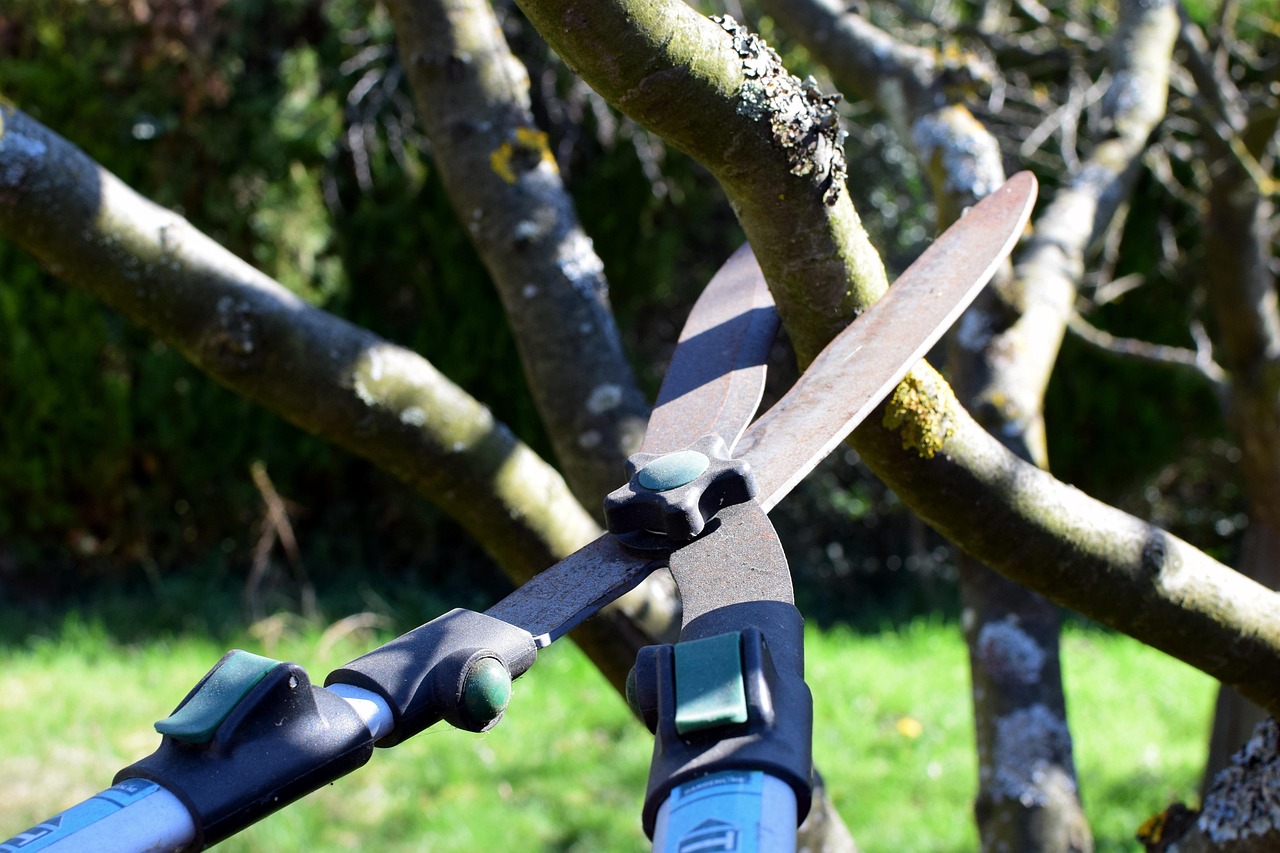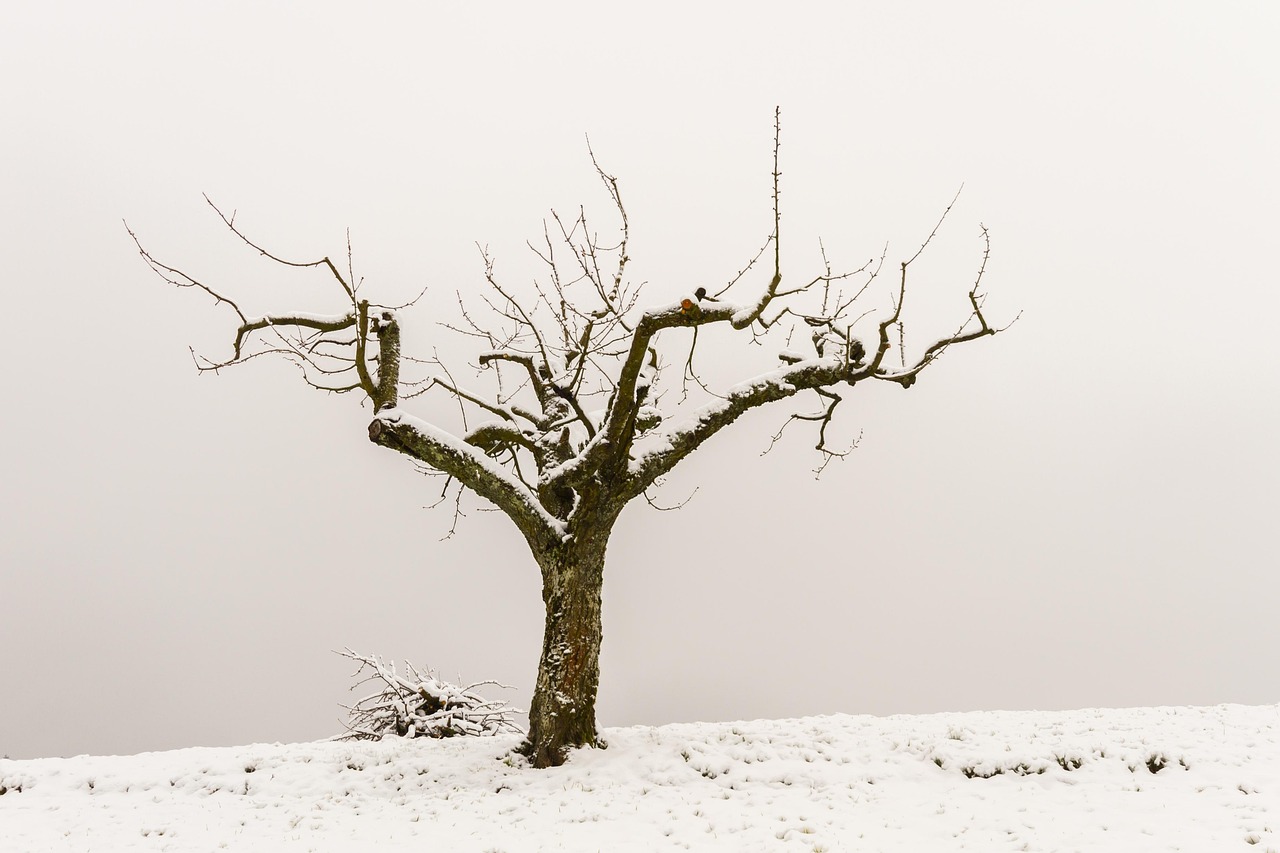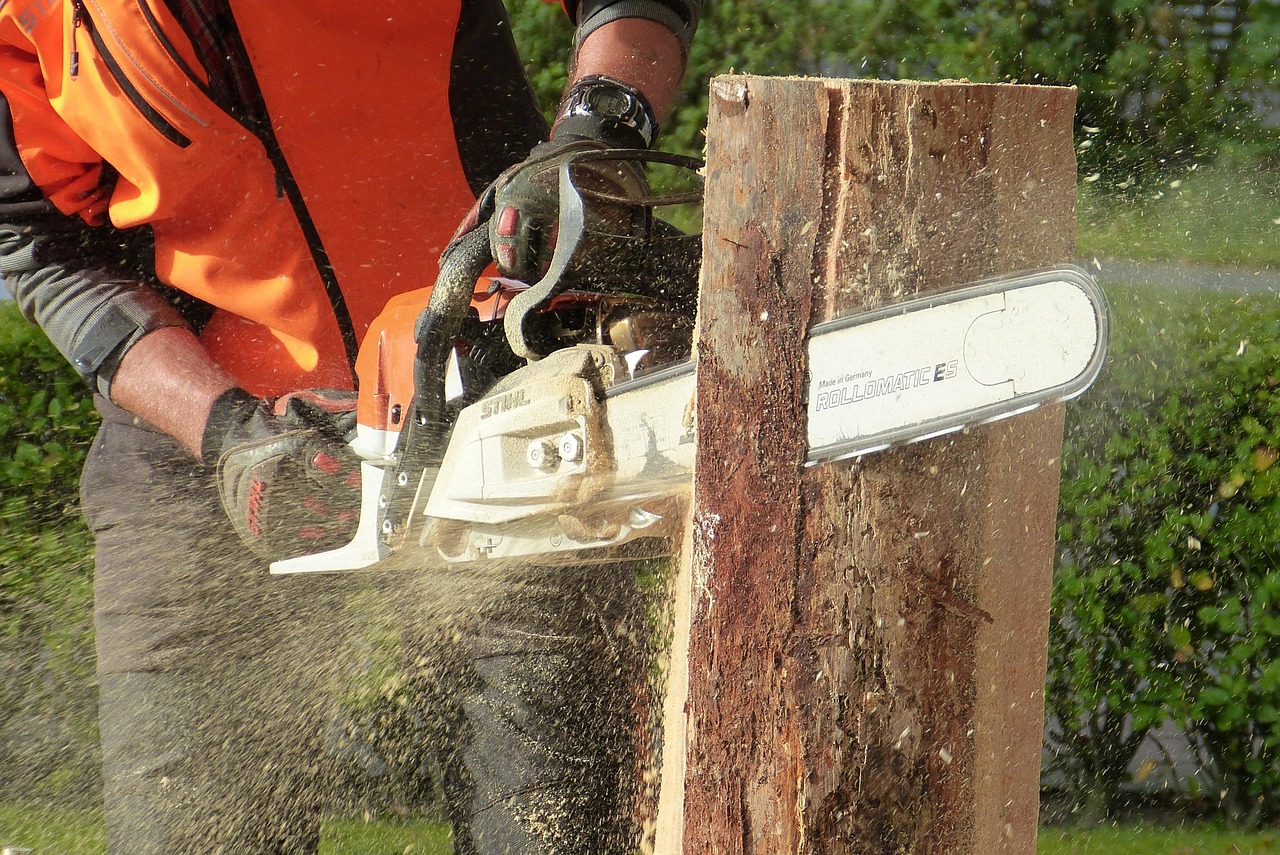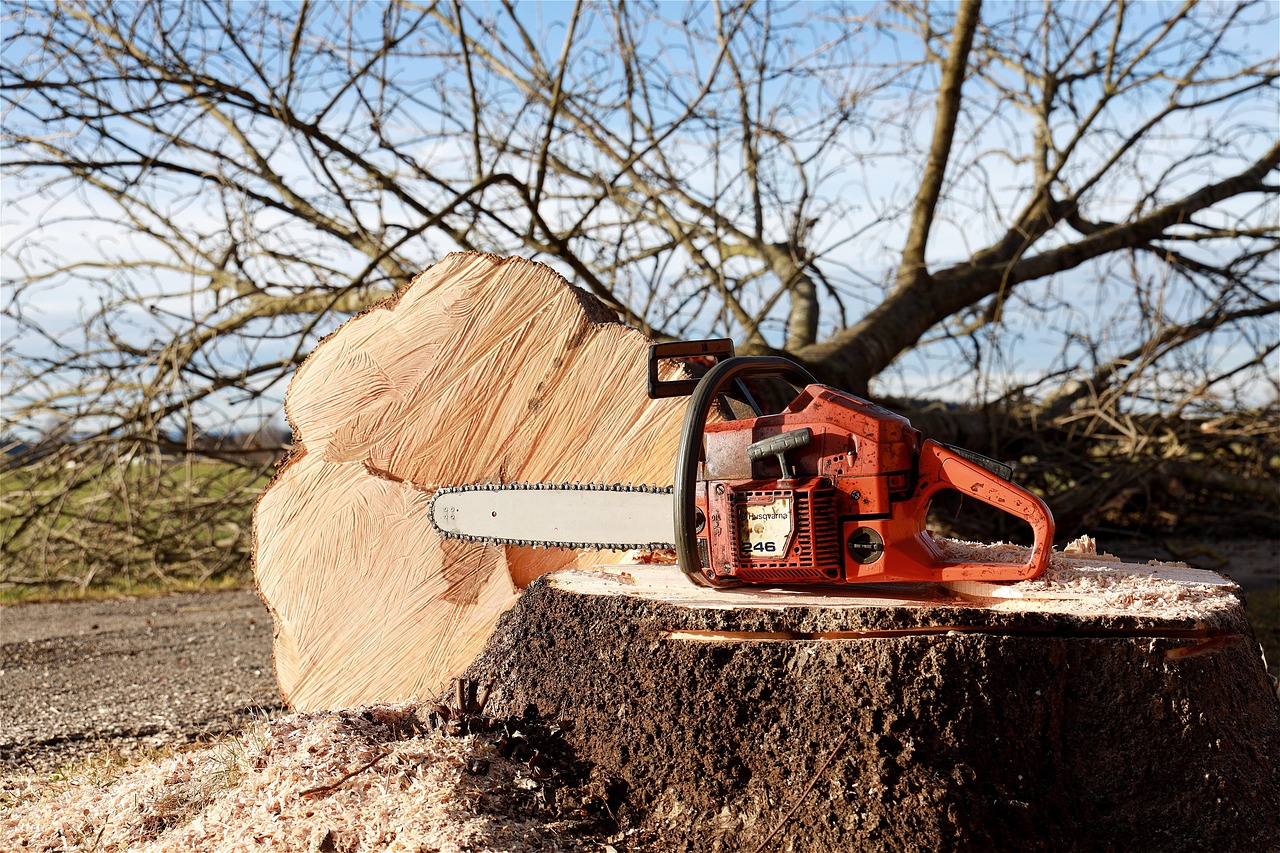Common problems in overgrown and neglected tree pruning include excessive limb removal, improper cuts leading to disease, and impaired tree structure. These issues can compromise the health and appearance of trees, making regular maintenance essential for their longevity.
Trees are vital components of our environment. They provide shade, improve air quality, and enhance the aesthetic appeal of landscapes. However, when trees are neglected or allowed to overgrow, they can develop numerous issues that require careful attention. Proper pruning is crucial to maintaining tree health and ensuring safety around properties.

Overgrown trees can pose risks, such as falling branches, obstructing views, or interfering with power lines. Neglecting to prune these trees leads to a variety of problems that can affect not only the tree itself but also the surrounding area. Understanding common problems associated with overgrown and neglected tree pruning is essential for homeowners and landscapers alike.
Understanding Overgrown Trees
Overgrown trees typically exhibit dense foliage and elongated branches. These characteristics can make them challenging to manage. The following factors contribute to the overgrowth of trees:
- Inadequate pruning practices in previous years
- Environmental factors such as soil quality and sunlight availability
- Tree species characteristics that promote rapid growth
When trees are not pruned regularly, they can become unmanageable. This situation leads to several common issues that need addressing to promote healthy growth and prevent hazards.

Common Problems in Overgrown Tree Pruning
Neglected trees often experience several problems when it comes to pruning. These problems can be detrimental to the tree’s health and pose risks to the surrounding environment. Here are some of the most common issues:
1. Excessive Limb Removal
One of the most significant issues with overgrown tree pruning is excessive limb removal. In an attempt to control size or shape, some individuals may cut back too many branches. This practice can lead to:
- Tree stress due to sudden loss of foliage
- Increased vulnerability to pests and diseases
- Reduced photosynthesis capabilities, affecting overall health
2. Improper Cuts Leading to Disease
Improper pruning cuts can create wounds on the tree that are susceptible to infections. The following points highlight how incorrect cuts can harm trees:

- Cutting too close to the trunk can damage the bark, leading to decay.
- Leaving large stubs encourages rot and attracts insects.
- Using dull tools increases the chance of tearing bark.
3. Impaired Tree Structure
An overgrown tree often has a weak structure due to uneven growth. When pruning is not done correctly, trees can develop:
- Crooked or weak branches that may break under stress
- Unbalanced growth that causes leaning
- Poor air circulation within the canopy, leading to disease
4. Increased Risk of Falling Branches
Overgrown trees with heavy limbs are at a higher risk of losing branches. Factors contributing to this risk include:
- Weight from dense foliage during storms
- Weak branch attachments due to poor pruning techniques
- Lack of structural integrity from previous neglect
5. Difficulty in Management
Finally, overgrown trees can become increasingly challenging to manage. Homeowners may face:

- Heightened maintenance costs due to extensive work required
- Challenges in accessing high branches for pruning or removal
- Potential safety hazards when trying to manage large limbs
The importance of regular tree care cannot be overstated. By addressing these common problems associated with overgrown and neglected trees, property owners can mitigate risks and maintain healthy landscapes. Regular pruning helps ensure trees remain strong, beautiful, and safe for everyone.
| Problem | Consequences |
|---|---|
| Excessive Limb Removal | Tree stress, increased disease vulnerability, reduced photosynthesis |
| Improper Cuts | Infections, rot, and pest attraction |
| Impaired Structure | Crooked branches, leaning, poor air circulation |
| Falling Branches Risk | Injury risk, damage to property, increased maintenance costs |
| Management Difficulty | Heightened costs, safety hazards during maintenance |
By understanding these common issues associated with overgrown tree pruning, homeowners can take proactive steps to ensure their trees are healthy and well-maintained.
Identifying Signs of Neglect in Trees
Recognizing the signs of neglect in trees is essential for effective intervention. Homeowners should be aware of several indicators that suggest a tree has not received proper care. These signs can help in deciding whether pruning or more extensive measures are needed.
1. Unruly Growth Patterns
One of the most visible signs of neglect is irregular growth patterns. Trees may develop asymmetrical canopies or an abundance of crossing branches. This can result in:
- Reduced sunlight exposure for lower branches
- Increased competition for resources among branches
- Aesthetic issues that detract from landscape appeal
2. Dead or Dying Branches
Another critical sign is the presence of dead or dying branches. These branches can indicate underlying problems, such as:
- Pest infestations affecting tree health
- Disease presence that may spread to healthy parts
- Insufficient water or nutrient supply
3. Fungal Growth and Decay
The appearance of fungi on the tree trunk or branches signals decay. Fungi can manifest as:
- Mushrooms growing at the base of the tree
- Bracket fungi on the sides of branches
- Discoloration or oozing on the bark surface
These indicators suggest that the tree may be compromised and require immediate attention.
Consequences of Neglected Tree Care
Neglected trees can lead to various consequences that affect not only the tree itself but also its surroundings. Understanding these consequences can motivate homeowners to take action.
1. Safety Hazards
One of the most pressing issues with neglected trees is safety hazards. Potential dangers include:
- Falling branches that can cause injuries to people or pets
- Tree collapse during storms, damaging property or vehicles
- Obstructed views leading to traffic hazards
2. Increased Pest Activity
Neglected trees often attract pests, creating a cycle of infestation. Common pests include:
- Bark beetles that bore into tree trunks
- Aphids that feed on new growth, weakening the tree
- Caterpillars that defoliate leaves, reducing photosynthesis
The presence of these pests can lead to further degradation of tree health and increased management costs.
3. Impact on Local Ecosystem
Overgrown and neglected trees can negatively affect local ecosystems. Some effects include:
- Reduced biodiversity due to loss of habitat for wildlife
- Altered water drainage patterns, leading to erosion
- Increased competition among plants for sunlight and nutrients
Best Practices for Tree Pruning and Maintenance
Proper pruning techniques and regular maintenance can significantly improve tree health. Adopting best practices ensures that trees remain vibrant and safe.
1. Timing Your Pruning
The timing of pruning plays a crucial role in its effectiveness. Pruning should ideally be done:
- During the dormant season (late fall to early spring) to minimize stress
- After flowering for specific species to encourage new growth
- Avoiding rapid growth periods, which can lead to excessive sap loss
2. Using Proper Tools and Techniques
Utilizing the right tools is essential for effective pruning. Homeowners should consider:
- Sharp, clean pruning shears to ensure smooth cuts
- Loppers for thicker branches that require more leverage
- Saws for larger limbs that cannot be cut with shears or loppers
Additionally, proper technique involves:
- Making cuts at a 45-degree angle to promote healing
- Avoiding flush cuts that could injure the trunk
- Removing no more than 25% of a tree’s canopy at one time to prevent shock
3. Regular Inspections and Monitoring
Conducting regular inspections helps identify potential issues before they escalate. Homeowners should look for:
- Signs of disease or pest activity during seasonal checks
- Crown thinning or dieback indicating stress levels
- Overall growth patterns to determine if adjustments are needed in maintenance
| Sign of Neglect | Potential Consequence |
|---|---|
| Irregular Growth Patterns | Reduced sunlight exposure and aesthetic issues |
| Dead or Dying Branches | Pest infestations and disease spread |
| Fungal Growth and Decay | Tree health compromise and potential failure |
| Pest Activity Increase | Cascading effects on tree health and surrounding plants |
| Safety Hazards | Injuries and property damage risks during storms or high winds |
By following these best practices, homeowners can ensure their trees remain healthy and well-maintained, ultimately preventing the common problems associated with neglect and overgrowth.
Tools and Techniques for Effective Tree Pruning
Utilizing the right tools and techniques is essential for effective tree pruning. Proper equipment and methods can help ensure that trees are pruned safely and efficiently, minimizing the risk of damage.
Essential Pruning Tools
When it comes to tree pruning, having the appropriate tools makes a significant difference. Here are some tools that every homeowner or landscaper should consider:
- Hand Pruners: Ideal for small branches and soft wood. They allow for precise cuts and are easy to handle.
- Loppers: These are long-handled tools designed for cutting thicker branches that hand pruners cannot manage.
- Pruning Saws: A pruning saw is necessary for larger limbs. It provides more control and makes cleaner cuts than regular saws.
- Chainsaws: For very large branches or tree removals, a chainsaw is efficient, though it should be used with caution.
- Safety Gear: Always wear gloves, goggles, and a hard hat to protect yourself from falling debris and sharp tools.
Proper Pruning Techniques
Understanding proper pruning techniques is just as important as having the right tools. Correct techniques not only promote tree health but also enhance safety during the pruning process. Here are some key techniques to follow:
- Thinning Cuts: Remove entire branches back to their origin to improve air circulation and light penetration within the canopy.
- Heading Cuts: These cuts reduce the length of a branch but should be used sparingly to avoid excessive stress on the tree.
- Reduction Cuts: Lower the height of a tree or branch by cutting back to a lateral branch or bud. This technique encourages new growth.
- Cleaning Cuts: Remove dead, damaged, or diseased branches to maintain tree health and aesthetics.
The Importance of Tree Pruning Seasons
The timing of tree pruning significantly impacts its effectiveness. Different seasons provide distinct advantages for various tree species. Understanding these seasonal differences can help optimize pruning efforts.
1. Dormant Season Pruning
The dormant season, typically late fall to early spring, is an ideal time for most tree pruning. Benefits of this timing include:
- Reduced stress on the tree, allowing it to heal before new growth begins.
- Easier visibility of the tree’s structure without leaves, making it simpler to identify problem areas.
- Lower risk of pest infestation and disease spread during this period.
2. Spring Pruning
Spring pruning can work well for certain species, especially those that bloom in the summer. Key points include:
- Pruning just after flowering helps promote healthier blooms for next season.
- This timing supports new growth as trees begin to awaken from dormancy.
3. Summer Pruning
Summer pruning is often used for specific goals such as controlling growth or removing unwanted branches. Important considerations include:
- It can reduce the risk of tree stress if done carefully.
- This method allows for better visibility of the tree’s structure as leaves can hide issues.
Challenges in Overgrown Tree Pruning
Overgrown trees present unique challenges during pruning. Homeowners must be aware of these challenges to address them effectively.
1. Height and Accessibility Issues
Tall trees can be difficult to access, especially when attempting to prune high branches. Solutions include:
- Using extension pruners for higher branches where ladders may not be safe.
- Hiring professional arborists who have the expertise and equipment to manage tall trees safely.
2. Branch Weight and Structure
Overgrown branches often carry significant weight, posing risks during pruning. To manage this challenge:
- Cuts should be made strategically to prevent sudden limb failure.
- Consider using rope or harness systems for safety when working with heavy branches.
3. Disease Management
Trees that have been neglected may suffer from diseases that complicate pruning. Steps to take include:
- Identifying and treating diseases before pruning to prevent spreading pathogens.
- Sanitizing tools after each cut when dealing with infected wood to minimize contamination.
When to Seek Professional Help
Certain situations warrant the expertise of a professional arborist. Homeowners should consider hiring professionals if they encounter the following scenarios:
- The tree poses a safety hazard due to its size or condition.
- The required pruning exceeds personal capabilities or tool availability.
- A disease or pest problem appears extensive and requires specialized treatment.
By understanding the tools, techniques, seasonal timing, challenges of overgrown trees, and when to seek professional help, homeowners can effectively manage their tree care needs, leading to healthier and safer landscapes.
Understanding the Impact of Overgrown and Neglected Trees
Overgrown and neglected trees can lead to a range of environmental and aesthetic issues that affect not only the trees themselves but also the surrounding landscape. The importance of maintaining trees goes beyond mere appearances; it encompasses safety, health, and ecological balance. When trees are allowed to grow unchecked, they can create a host of problems that require immediate attention.
Environmental Considerations
Healthy trees play a crucial role in the environment. They provide shade, improve air quality, and contribute to biodiversity. However, overgrown trees can disrupt these benefits. Some environmental impacts include:
- Reduced Biodiversity: Overgrown trees can overshadow smaller plants and saplings, limiting their growth and survival.
- Altered Water Drainage: A dense canopy can change how rainwater drains through a landscape, possibly leading to soil erosion or water pooling.
- Increased Pest Attraction: Neglected trees often attract pests, which can spread to surrounding plants and disrupt local ecosystems.
Aesthetic Impact
The appearance of a landscape can suffer significantly due to overgrown and neglected trees. For homeowners and property managers, this can translate into:
- Decreased Property Value: Properties with poorly maintained trees may be less attractive to potential buyers.
- Unpleasant Views: Overgrown branches can block views and reduce the overall enjoyment of outdoor spaces.
- Inconsistent Landscaping: A lack of pruning can lead to an untidy appearance that contrasts with a well-maintained yard.
Preparing for Tree Pruning
Before undertaking tree pruning, homeowners should prepare adequately. Proper preparation can enhance the effectiveness of the pruning process and ensure safety. Key steps include:
- Assessing Tree Health: Conduct a thorough examination of the tree for signs of disease or structural issues.
- Planning Cuts: Determine which branches need to be removed based on their health and structural integrity.
- Gathering Supplies: Ensure all tools are clean, sharp, and ready for use, along with safety gear.
- Weather Considerations: Choose a dry day for pruning to minimize stress on the tree and avoid slippery conditions.
Maintaining a Regular Pruning Schedule
A regular pruning schedule is vital for maintaining tree health and appearance. Homeowners should consider implementing:
- Annual Inspections: At least once a year, inspect trees for growth patterns, disease, and structural integrity.
- Seasonal Pruning: Schedule pruning sessions according to the best practices for each specific tree species.
- Documentation: Keep records of pruning activities, including dates and specific actions taken, to track tree health over time.
Final Thoughts
Proper tree care is essential for the health of both the trees and their surrounding environment. Understanding the common problems associated with overgrown and neglected tree pruning helps homeowners make informed decisions about maintenance. By recognizing signs of neglect, using the right tools and techniques, and adhering to seasonal best practices, individuals can significantly improve the condition of their trees.
Moreover, seeking professional assistance when needed ensures that trees receive expert care, particularly in challenging situations. By maintaining a regular pruning schedule, property owners can keep their landscapes thriving while avoiding the pitfalls associated with neglect. Healthy trees not only enhance property values but also contribute positively to the ecosystem.
In conclusion, proactive tree management is key to fostering a safe, beautiful, and sustainable environment. Homeowners are encouraged to prioritize tree care as an integral part of landscape maintenance for long-term benefits.
